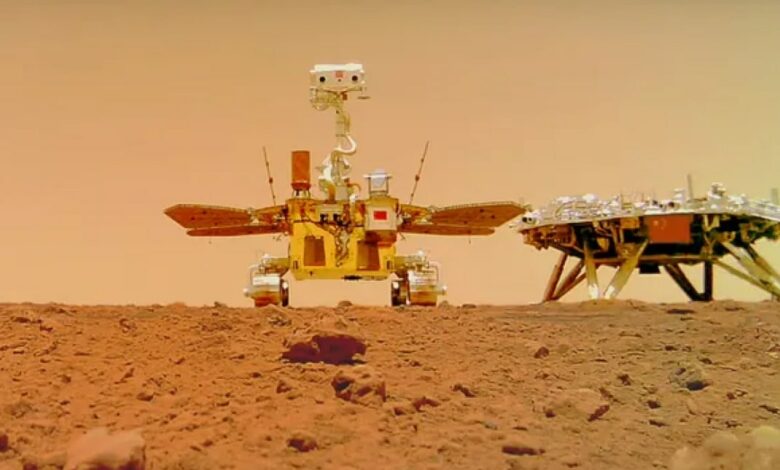Did Mars ever have oceans? Chinese Rover Zhurong reveals new clues

Evidence of an ancient ocean on Mars may have been discovered by China’s Zhurong rover, scientists report. Data collected by the now-defunct rover indicates a possible ancient coastline in Mars’ northern hemisphere. Researchers from Hong Kong Polytechnic University, including lead scientist Bo Wu, believe these findings support long-standing theories about a large ocean on Mars that existed billions of years ago. The Zhurong rover, which traveled about 2 kilometers within the Utopia Planitia basin, relayed this data through observations from its onboard cameras and ground-penetrating radar.
The study detailing the findings was published in the journal Scientific Reports. Through the exploration of Zhurong, researchers have identified features that may be related to water activity, including pitted cones, channels and formations that resemble mud volcanoes. Such structures, the scientists suggest, could represent a coastal landscape shaped by the once-existing ocean. Further analysis of the surface deposits indicates that the ocean existed about 3.68 billion years ago and may have contained silt-rich water that left several geological layers in the Martian landscape.
Complex history of water on Mars
The research team proposes that Mars’ ancient ocean may have gone through phases of freezing and thawing, which contributed to the formation of the observed coastline. Sergey Krasilnikov of Hong Kong Polytechnic University noted that the ocean may have been frozen for about 10,000 to 100,000 years before drying up completely, about 260 million years later. Wu acknowledged the difficulty in definitively determining the coastline due to erosion over millennia, but suggested that asteroid impacts could have preserved certain parts of the coastline.
Future prospects for verifying Mars’ water history
Despite Zhurong’s findings, scientists acknowledge that definitive proof of Mars’ ancient water history will require analysis of Martian samples on Earth. China’s Tianwen 3 mission, set to launch in 2028, aims to return surface samples by 2031. By comparison, NASA’s Mars Sample Return mission is expected to return samples in the 2030s.




